Smart Kitchen Appliances Market Size
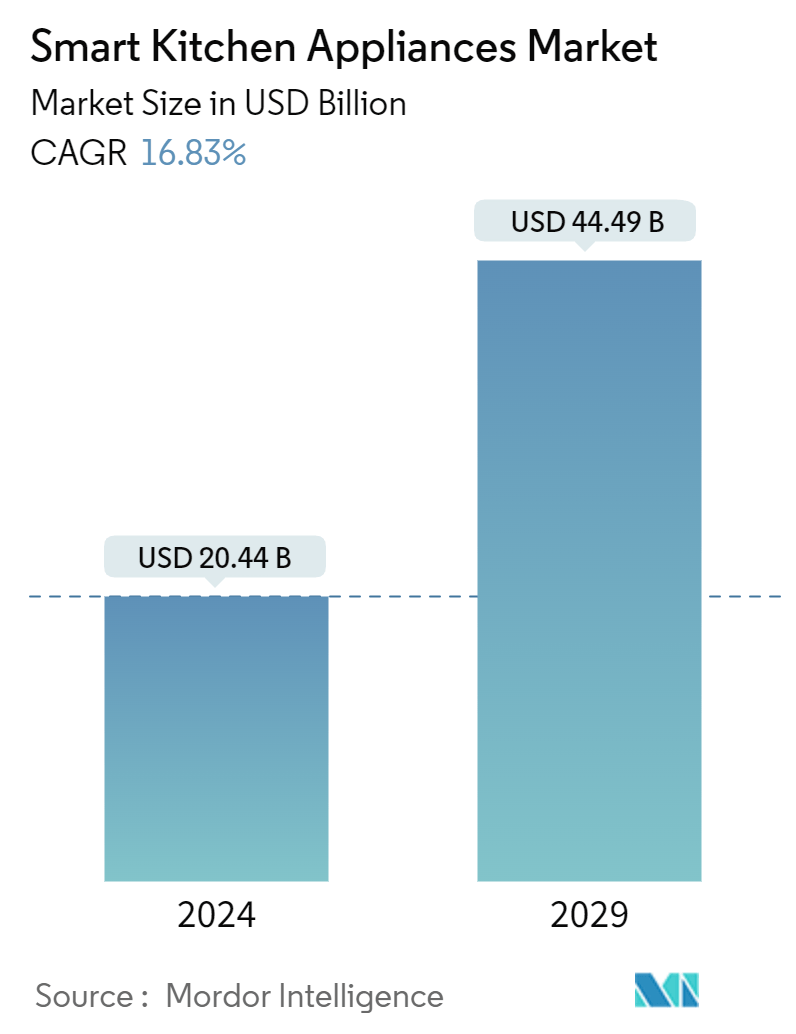
| Study Period | 2020 - 2029 |
| Market Size (2024) | USD 20.44 Billion |
| Market Size (2029) | USD 44.49 Billion |
| CAGR (2024 - 2029) | 16.83 % |
| Fastest Growing Market | Asia Pacific |
| Largest Market | North America |
| Market Concentration | Low |
Major Players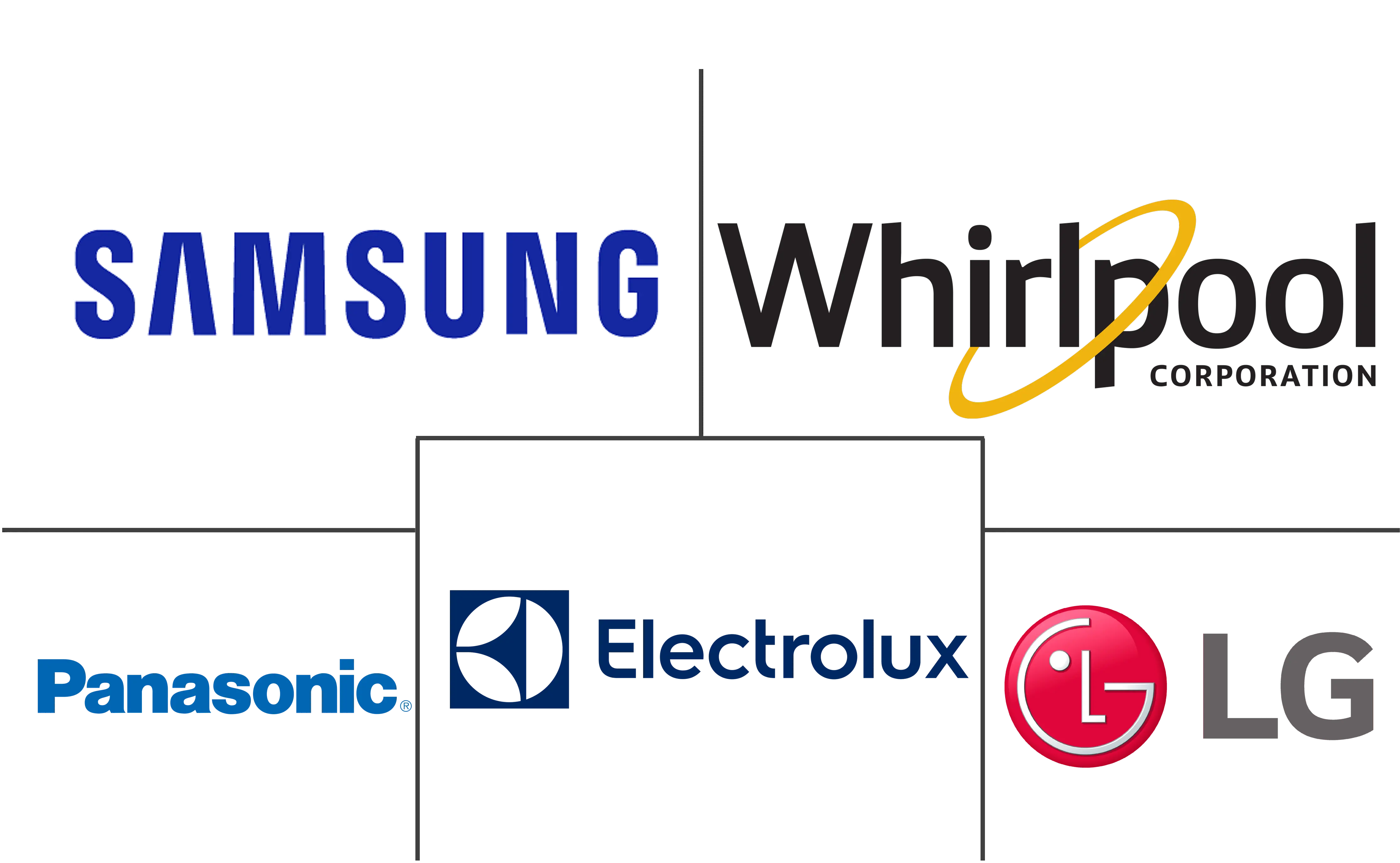
*Disclaimer: Major Players sorted in no particular order |
Smart Kitchen Appliances Market Analysis
The Smart Kitchen Appliances Market size is estimated at USD 20.44 billion in 2024, and is expected to reach USD 44.49 billion by 2029, growing at a CAGR of 16.83% during the forecast period (2024-2029).
With rapid technological advancements, the kitchen has undergone a significant transformation, with a strong emphasis on optimizing the kitchen environment and reducing the amount of time spent on cleaning and cooking. The kitchen industry has been growing in importance due to devices equipped with smart sensors and IoT-enabled technology. IoT devices are expected to continue to contribute to the growth of the market over the next few years.
Appliances found in kitchens, including refrigerators, cooktops, coffee makers, microwaves, and wall ovens, now have the capability to connect through Wi-Fi or Bluetooth, allowing users to control them using their smartphones. Young people, especially millennials, are increasingly turning to these kitchen appliances because of their hectic lives and busy work schedules, but also because of their convenience and speed of cooking. Swift advancements in product design, the rapid evolution of operational technologies, and extensive digitization on a large scale will further fuel the expansion of this market in the forthcoming years.
Smart refrigerators now offer fully personalized nutrition plans certified by qualified doctors. These plans can be accessed through smartphone apps that connect to smart fridges. Smart fridges can even identify foods, scan food items for nutritional information, look up restaurant menus, and measure macronutrients and micronutrients throughout the day.
Smart kitchens are growing in popularity due to the trend toward smaller, single households and more integrated kitchen designs. Not only are smart devices convenient and easy to use, but they also help with sustainability. Connected household appliances can do more than store shopping lists.
Smart Kitchen Appliances Market Trends
The Rising Adoption of Artificial Intelligence in Smart Kitchen Appliances
The increasing number of people working worldwide is a major factor driving the global market for AI-powered kitchen appliances. The growing number of people working in developing countries will increase the need for AI-powered appliances. Rising technological breakthroughs in kitchen appliances will help people reduce the number of repetitive tasks while offering fast and easy service. The increased use of technology like smartphones and other gadgets will increase efficiency, reduce operational costs, and drive market growth. AI-powered kitchen equipment is increasingly being used in commercial sectors like restaurants, where customer service needs to be fast and affordable. However, the high price of AI-powered appliances may limit the growth of the industry.
AI-powered kitchen appliances are on the rise all over the world. With voice control and AI, the intelligent assistant has become the hub of connected homes. The new generation of homeowners are taking advantage of new technology, like preheating their oven with Alexa or activating their dishwashers with the mobile app on the global market.
For example, Samsung is at the forefront of artificial intelligence in food. A number of recipes using the available ingredients are recommended via a camera to scan in the refrigerator's interior. The AI component learns your preferences, likes and dislikes, dietary needs, and more to provide you with curated, relevant recipes. Additionally, it makes choices based on saved recipes and seasonal ingredients based on weather conditions.
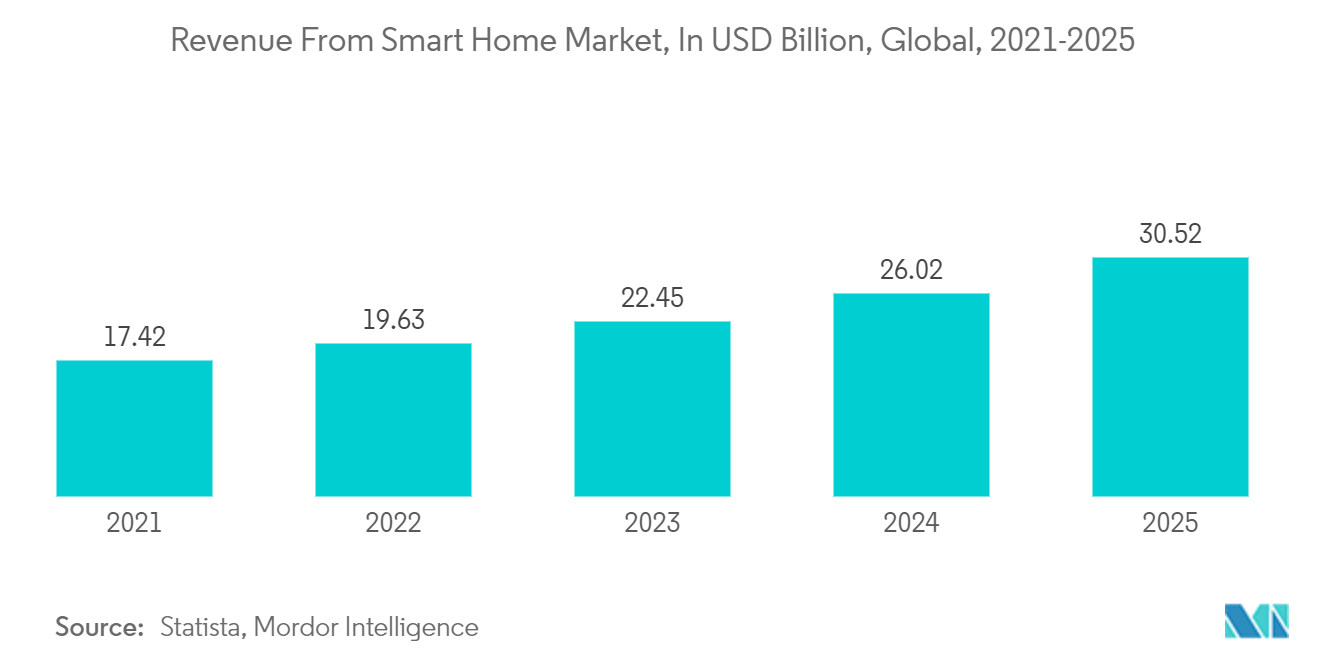
North America is Dominating the Smart Kitchen Appliances Market
In the construction industry in North America, the demand for connected homes with smart appliances and devices is very high. Developed countries like the United States have made significant progress in smart home development. The US market for smart homes has seen a significant increase in recent years, and this trend is expected to continue in the near future.
According to a report by Alarm.org, 57% of Americans agree that using smart products could save them around 30 minutes in a day, and about 47% of millennials use smart home products. The adoption of these devices is opening up new opportunities for smart kitchen appliances, as these appliances are one of the most essential household items.
The factors promoting market growth are the country's high technological acceptance and consumer purchasing power. Even the government is promoting the adoption of energy-efficient appliances. Furthermore, although built-in connectivity is a niche feature in large cooking appliances in the United States, a rise in smart assistant speakers is indicated. For example, Whirlpool integrated technological innovations in a selection of kitchen appliances called the Smart Home Line.
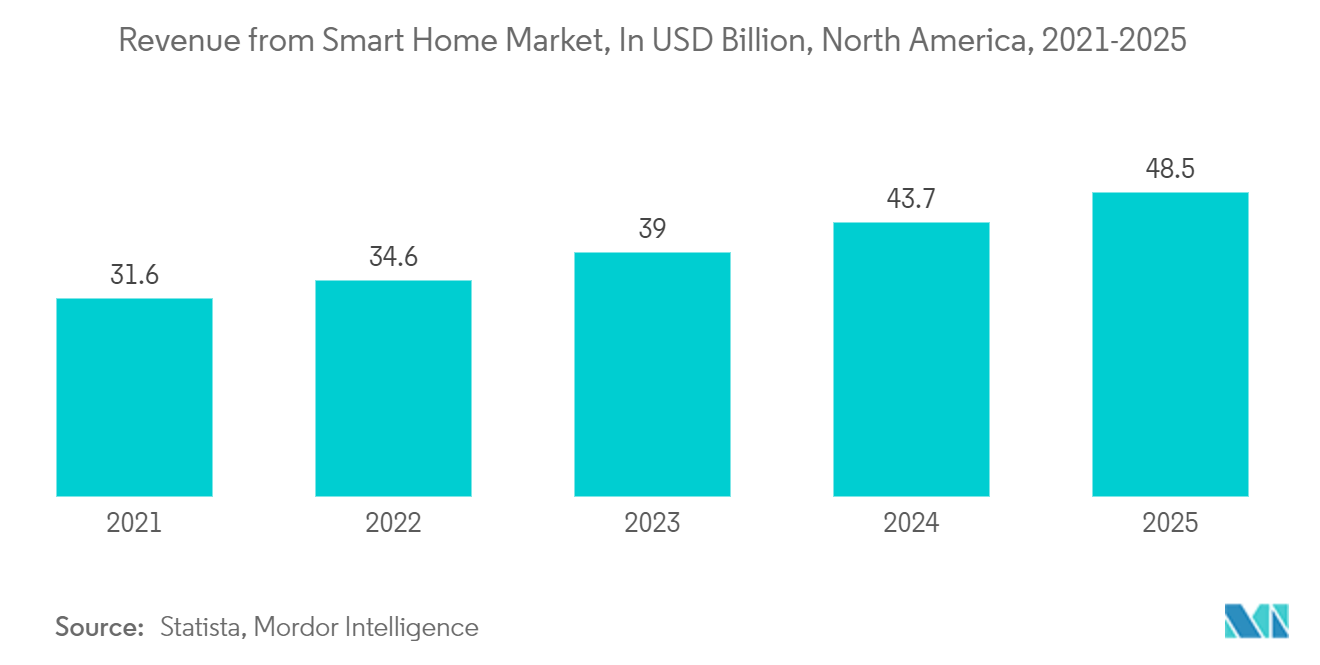
Smart Kitchen Appliances Industry Overview
The most prominent market players include Samsung Electronics Co. Ltd, Whirlpool Corporation, LG Electronics, and AB Electrolux. Key players are focusing on online distribution channels for their product branding and online marketing to attract more customers. Some of the other prominent players in the market are Sub-Zero, Breville Group Limited, Hestan Cue Inc., Miele & Cie KG, and Panasonic Corporation.
Smart Kitchen Appliances Market Leaders
-
Samsung Electronics Co. Ltd
-
Whirlpool Corporation
-
Electrolux AB
-
LG Electronics Inc.
-
Panasonic Corporation
*Disclaimer: Major Players sorted in no particular order
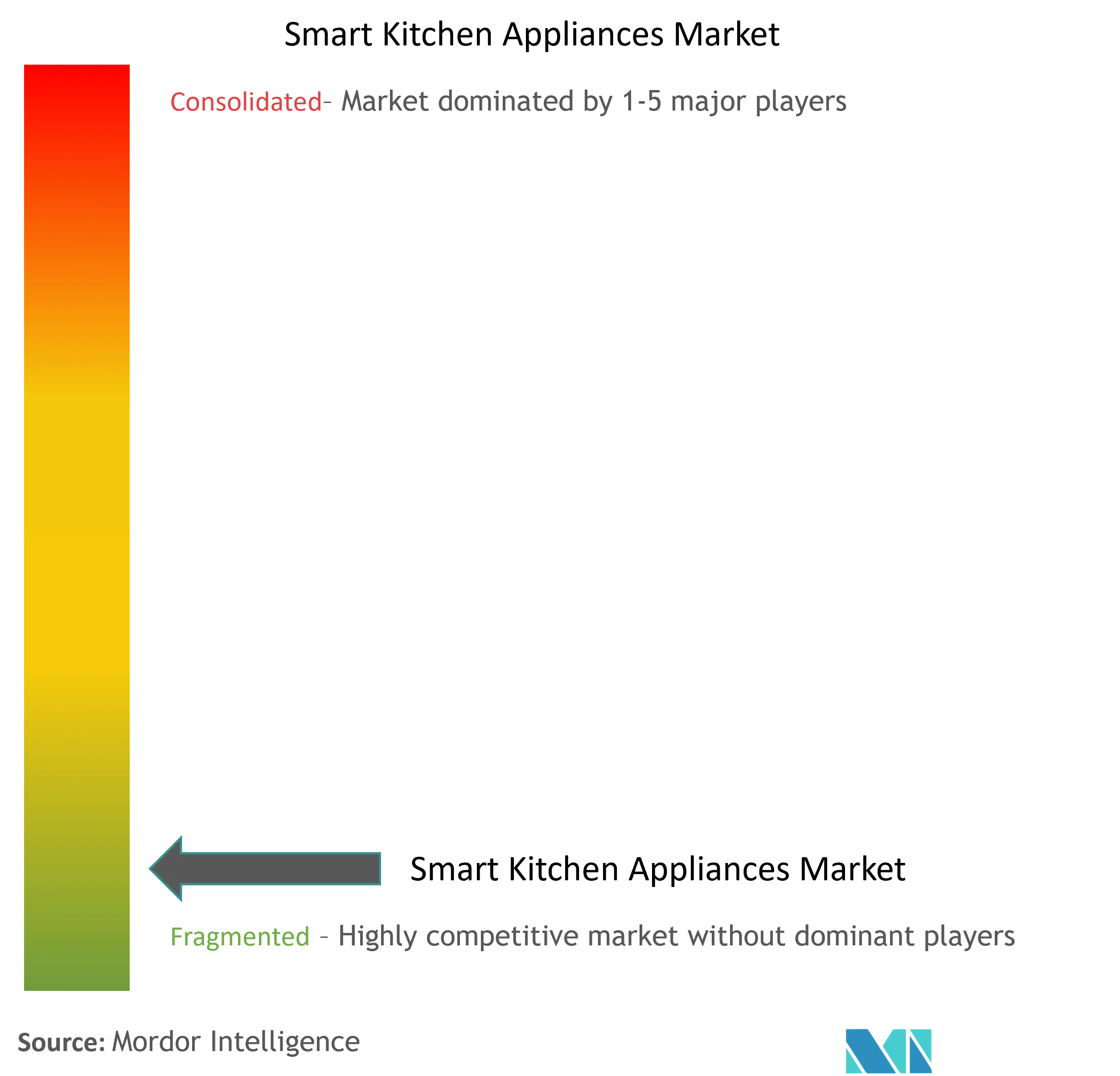
Smart Kitchen Appliances Market News
- May 2023: LG Electronics released the InstaView refrigerator featuring door panels that can change colors, offering enhanced customization. Users can alter the colors according to their mood, with the LED panels providing access to an impressive selection of up to 190,0001 color combinations.
- January 2023: Samsung Electronics introduced the latest enhancements to its customizable Bespoke Home series. The new home appliances and services were crafted to cater to the increasing desire for personalization and to offer enhanced connectivity that enables users to adopt more sustainable practices. Among the updates are a broader range of Bespoke refrigerator models and advanced AI Pro Cooking capabilities for the Bespoke AI Oven, which streamline and support meal preparation.
Smart Kitchen Appliances Market Report - Table of Contents
1. INTRODUCTION
1.1 Study Assumptions and Market Definition
1.2 Scope of the Study
2. RESEARCH METHODOLOGY
3. EXECUTIVE SUMMARY
4. MARKET DYNAMICS AND INSIGHTS
4.1 Market Overview
4.2 Market Drivers
4.2.1 The Growth in the Hospitality Sector is Shifting to Commercial Smart Kitchen Appliances
4.2.2 Surge in Urban Population and Rise in Expenditure on Home Renovations Driving Market Growth
4.3 Market Restraints
4.3.1 Concerns About Data Privacy Among End Users Can Impedes Market Growth
4.3.2 High Cost of Maintenance and Upkeep
4.4 Market Opportunities
4.4.1 Consumer Preference Toward Energy Efficiency Generates Market Demand
4.4.2 Increasing Demand for Smart Refrigerators, Smart Micro Ovens and Other Smart Kitchen Appliances Helps Keep the Food Wastage Low
4.5 Porters Five Forces Analysis
4.5.1 Threat of New Entrants
4.5.2 Bargaining Power of Buyers/Consumers
4.5.3 Bargaining Power of Suppliers
4.5.4 Threat of Substitute Products
4.5.5 Intensity of Competitive Rivalry
4.6 Technological Advancements in the Market
4.7 Consumer Behavior Analysis
4.8 Impact of COVID-19 on the Market
5. MARKET SEGMENTATION
5.1 By Product Type
5.1.1 Smart Ovens
5.1.2 Smart Dishwashers
5.1.3 Smart Refrigerators
5.1.4 Smart Cookware and Cooktops
5.1.5 Smart Scale and Thermometers
5.1.6 Other Product Types
5.2 Distribution Channel
5.2.1 Multi-brand Stores
5.2.2 Exclusive Stores
5.2.3 Online
5.2.4 Other Distribution Channels
5.3 End User
5.3.1 Residential
5.3.2 Commercial
5.4 Geography
5.4.1 North America
5.4.2 Europe
5.4.3 Asia-Pacific
5.4.4 South America
5.4.5 Middle East & Africa
6. COMPETITIVE LANDSCAPE
6.1 Market Concentration Overview
6.2 Company Profiles
6.2.1 AB Electrolux
6.2.2 Samsung Electronics Co. Ltd
6.2.3 Whirlpool Corporation
6.2.4 LG Electronics Inc.
6.2.5 BSH Home Appliances Corporation
6.2.6 Panasonic Corporation
6.2.7 Haier Group
6.2.8 Breville Group Limited
6.2.9 Miele
6.2.10 Philips
- *List Not Exhaustive
7. MARKET OPPORTUNITIES AND FUTURE TRENDS
8. DISCLAIMER
Smart Kitchen Appliances Industry Segmentation
Smart kitchen appliances are crafted with enhanced user-friendliness, aiming to eliminate the necessity for manual labor. The market for smart kitchen appliances exhibits a high level of fragmentation.
The smart kitchen appliances are segmented into by product type (smart ovens, smart dishwashers, smart refrigerators, smart cookware and cooktops, smart scale and thermometers, and other product types), distribution channel (multi-branded stores, exclusive stores, online, and other distribution channels), end users (residential and commercial), and by geography (North America, Europe, Asia-Pacific, South America, and Middle East & Africa). The report offers market size and forecasts for the smart kitchen appliances market in value (USD) for all the above segments.
| By Product Type | |
| Smart Ovens | |
| Smart Dishwashers | |
| Smart Refrigerators | |
| Smart Cookware and Cooktops | |
| Smart Scale and Thermometers | |
| Other Product Types |
| Distribution Channel | |
| Multi-brand Stores | |
| Exclusive Stores | |
| Online | |
| Other Distribution Channels |
| End User | |
| Residential | |
| Commercial |
| Geography | |
| North America | |
| Europe | |
| Asia-Pacific | |
| South America | |
| Middle East & Africa |
Smart Kitchen Appliances Market Research FAQs
How big is the Smart Kitchen Appliances Market?
The Smart Kitchen Appliances Market size is expected to reach USD 20.44 billion in 2024 and grow at a CAGR of 16.83% to reach USD 44.49 billion by 2029.
What is the current Smart Kitchen Appliances Market size?
In 2024, the Smart Kitchen Appliances Market size is expected to reach USD 20.44 billion.
Who are the key players in Smart Kitchen Appliances Market?
Samsung Electronics Co. Ltd, Whirlpool Corporation, Electrolux AB, LG Electronics Inc. and Panasonic Corporation are the major companies operating in the Smart Kitchen Appliances Market.
Which is the fastest growing region in Smart Kitchen Appliances Market?
Asia Pacific is estimated to grow at the highest CAGR over the forecast period (2024-2029).
Which region has the biggest share in Smart Kitchen Appliances Market?
In 2024, the North America accounts for the largest market share in Smart Kitchen Appliances Market.
What years does this Smart Kitchen Appliances Market cover, and what was the market size in 2023?
In 2023, the Smart Kitchen Appliances Market size was estimated at USD 17.00 billion. The report covers the Smart Kitchen Appliances Market historical market size for years: 2020, 2021, 2022 and 2023. The report also forecasts the Smart Kitchen Appliances Market size for years: 2024, 2025, 2026, 2027, 2028 and 2029.
What is the target market for Smart Kitchen Appliances?
The target market for Smart Kitchen Appliances includes Tech Enthusiasts, Connected Home Users, Health and Fitness Enthusiasts, Smart Homeowners, and Renovators.
What is the target market for Smart Kitchen Appliances?
The target market for Smart Kitchen Appliances includes Tech Enthusiasts, Connected Home Users, Health and Fitness Enthusiasts, Smart Homeowners, and Renovators.
Smart Kitchen Appliance Industry Report
The global smart kitchen appliances market is witnessing significant growth, driven by factors such as the increasing number of single-person households, rising disposable income, growing number of smart homes, and the surge in online purchases of small household appliances. The market growth is further fueled by the rising penetration of Internet of Things (IoT) technology in household appliances, the launch of innovative products, and the growing adoption of artificial intelligence (AI) and IoT. There is a growing consumer demand for eco-friendly, stylish, and functional smart kitchen appliances with a range of features. The improvement of e-commerce platforms has enhanced consumer access to foreign brands, thereby increasing the adoption of smart kitchen appliances. New market entrants are offering competitively priced products, providing affordable alternatives or viable options for first-time buyers of smart kitchen appliances. From large to small appliances, smart gadgets are enabling device-to-device and cloud-to-cloud connectivity, integrating products from various manufacturers and unlocking certain functionalities for a simpler and more seamless user experience. According to Mordor Intelligence™ Industry Reports, the Smart Kitchen Appliance market share, size, and revenue growth rate statistics are available, along with a market forecast outlook and a historical overview. Get a sample of this industry analysis as a free report PDF download.



